Abstract
Associated injuries frequently occur in patients who sustain fractures of the pelvis. Hemorrhage from intrapelvic vessels, rupture of the urinary bladder and avulsion of the membranous urethra in males are among the integral risks in this trauma. Non-operative methods of managing hemorrhage have gained favor in recent experience. The case records of 282 male patients with pelvic fractures were reviewed to evaluate experience with lower genitourinary injuries. Early recognition is important in bladder injuries, and surgical repair is advised, except in selected patients who may be managed by catheter drainage alone. Delayed complications of bladder injury are rare. Membranous urethral injuries entail a high risk of chronic stricture disease and sexual impotence. The rationale of early repair versus delayed repair of these injuries is discussed. The results in this series show advantage for delayed repair.
Full text
PDF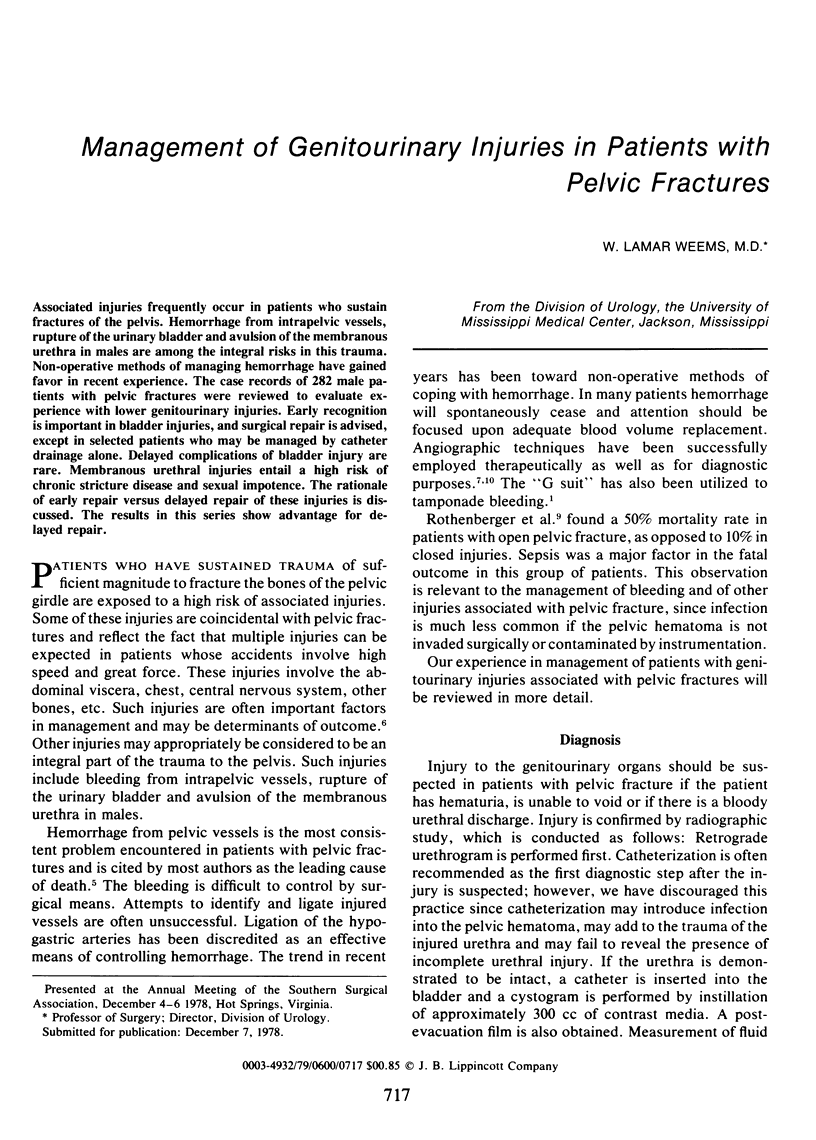
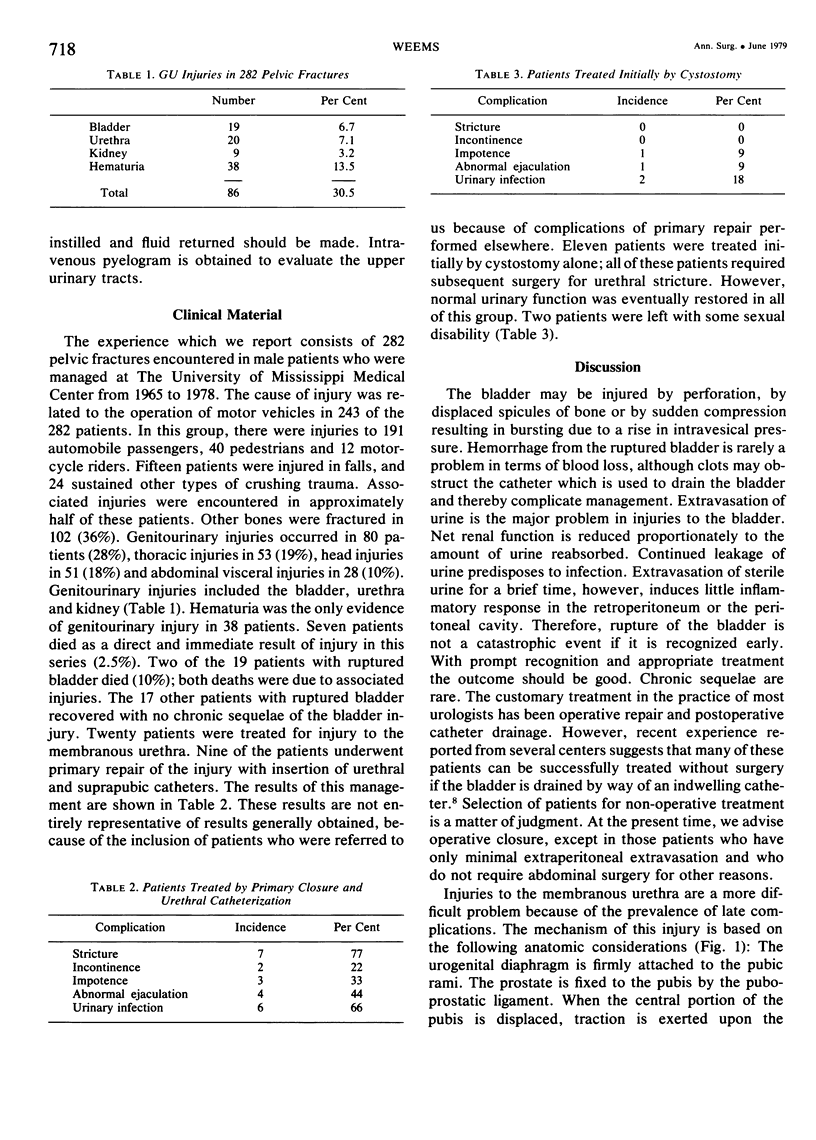
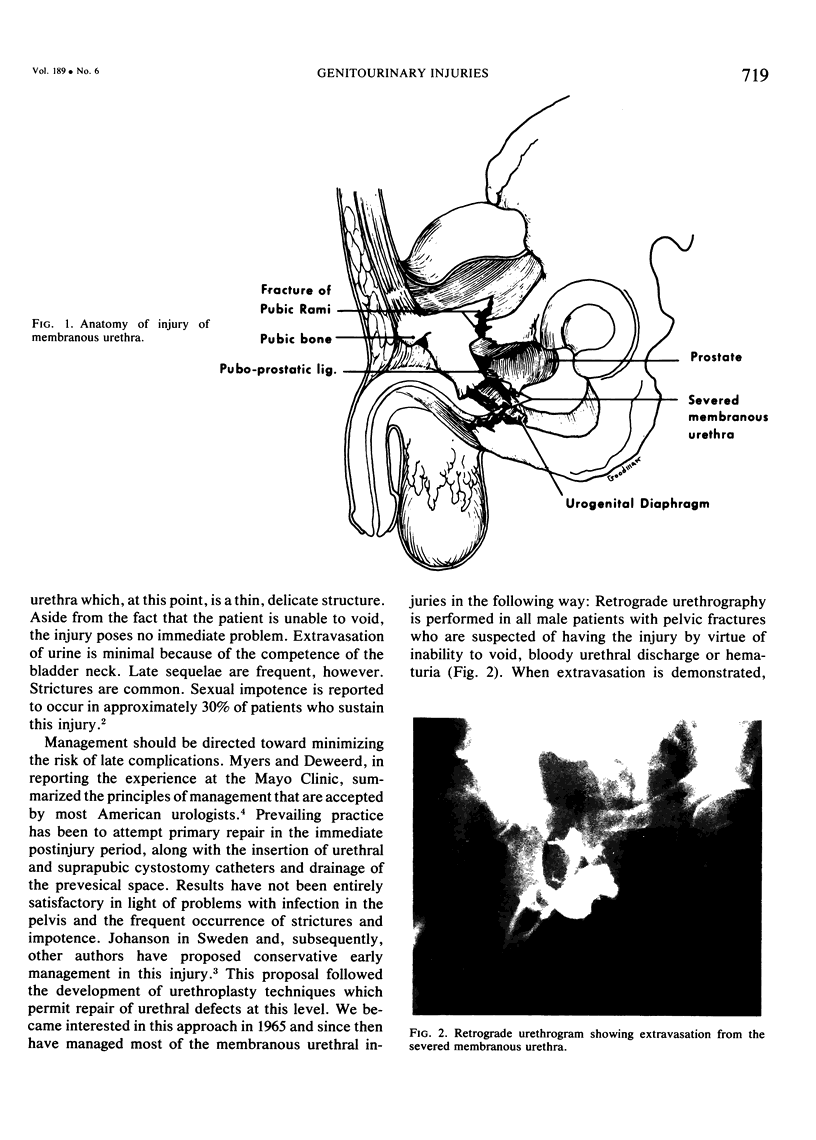
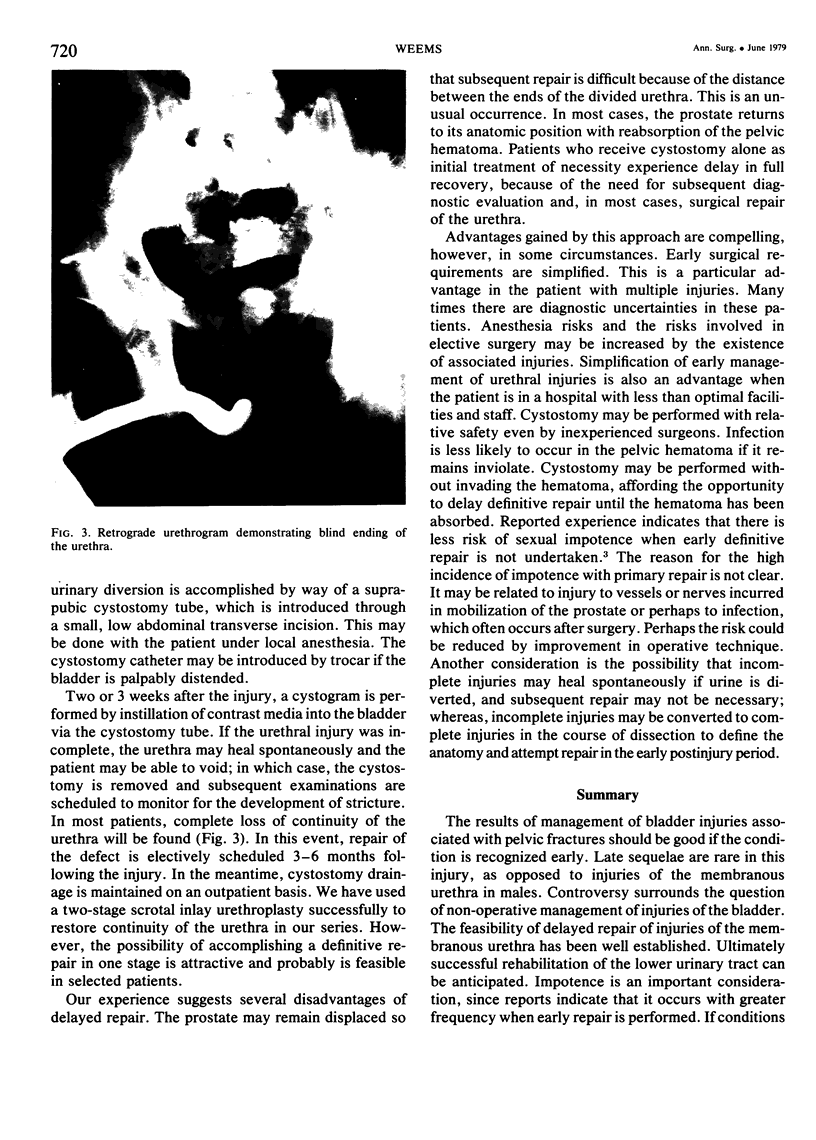
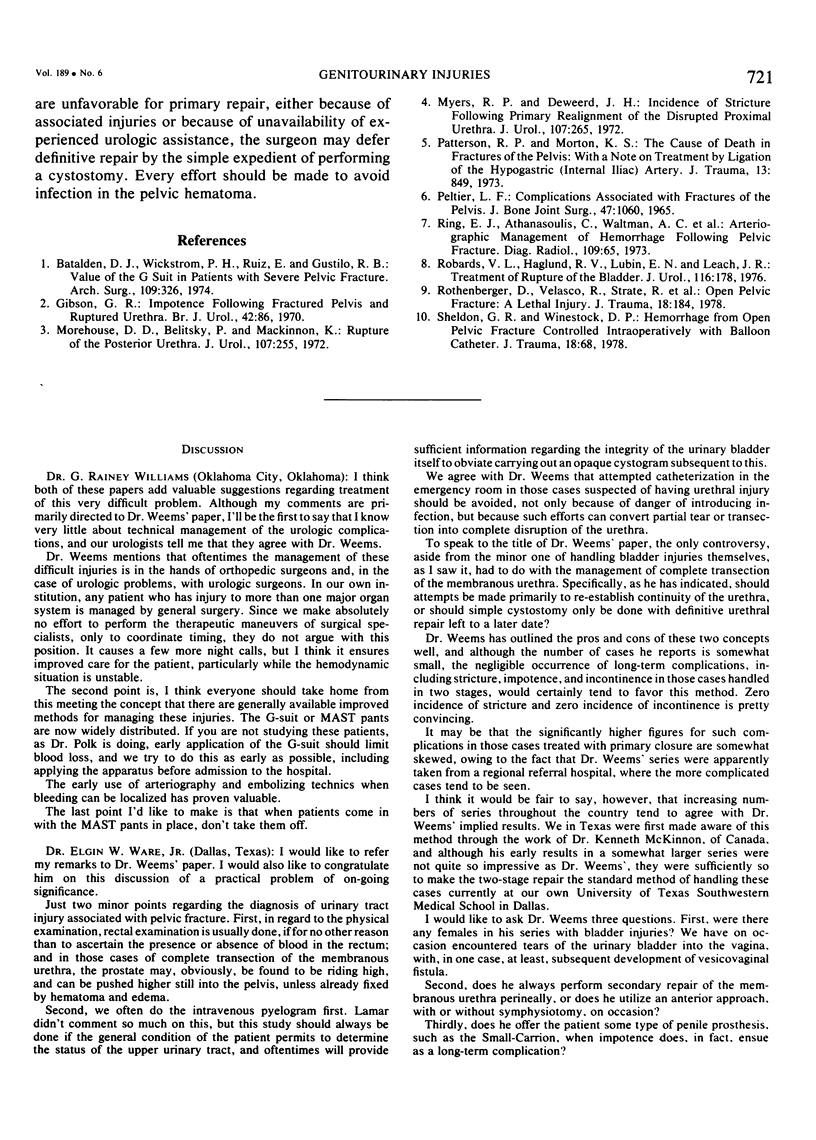
Images in this article
Selected References
These references are in PubMed. This may not be the complete list of references from this article.
- Batalden D. J., Wichstrom P. H., Ruiz E., Gustilo R. B. Value of the G suit in patients with severe pelvic fracture. Controlling hemorrhagic shock. Arch Surg. 1974 Aug;109(2):326–328. doi: 10.1001/archsurg.1974.01360020186036. [DOI] [PubMed] [Google Scholar]
- Gibson G. R. Impotence following fractured pelvis and ruptured urethra. Br J Urol. 1970 Feb;42(1):86–88. doi: 10.1111/j.1464-410x.1970.tb11912.x. [DOI] [PubMed] [Google Scholar]
- Morehouse D. D., Belitsky P., Mackinnon K. Rupture of the posterior urethra. J Urol. 1972 Feb;107(2):255–258. doi: 10.1016/s0022-5347(17)60996-0. [DOI] [PubMed] [Google Scholar]
- Myers R. P., Deweerd J. H. Incidence of stricture following primary realignment of the disrupted proximal urethra. J Urol. 1972 Feb;107(2):265–268. doi: 10.1016/s0022-5347(17)60998-4. [DOI] [PubMed] [Google Scholar]
- PELTIER L. F. COMPLICATIONS ASSOCIATED WITH FRACTURES OF THE PELVIS. J Bone Joint Surg Am. 1965 Jul;47:1060–1069. [PubMed] [Google Scholar]
- Patterson F. P., Morton K. S. The cause of death in fractures of the pelvis: with a note on treatment by ligation of the hypogastric (internal iliac) artery. J Trauma. 1973 Oct;13(10):849–856. [PubMed] [Google Scholar]
- Ring E. J., Athanasoulis C., Waltman A. C., Margolies M. N., Baum S. Arteriographic management of hemorrhage following pelvic fracture. Radiology. 1973 Oct;109(1):65–70. doi: 10.1148/109.1.65. [DOI] [PubMed] [Google Scholar]
- Robards V. L., Jr, Haglund R. V., Lubin E. N., Leach J. R. Treatment of rupture of the bladder. J Urol. 1976 Aug;116(2):178–179. doi: 10.1016/s0022-5347(17)58736-4. [DOI] [PubMed] [Google Scholar]
- Rothenberger D., Velasco R., Strate R., Fischer R. P., Perry J. F., Jr Open pelvic fracture: a lethal injury. J Trauma. 1978 Mar;18(3):184–187. [PubMed] [Google Scholar]
- Sheldon G. F., Winestock D. P. Hemorrhage from open pelvic fracture controlled intraoperatively with balloon catheter. J Trauma. 1978 Jan;18(1):68–70. doi: 10.1097/00005373-197801000-00015. [DOI] [PubMed] [Google Scholar]




